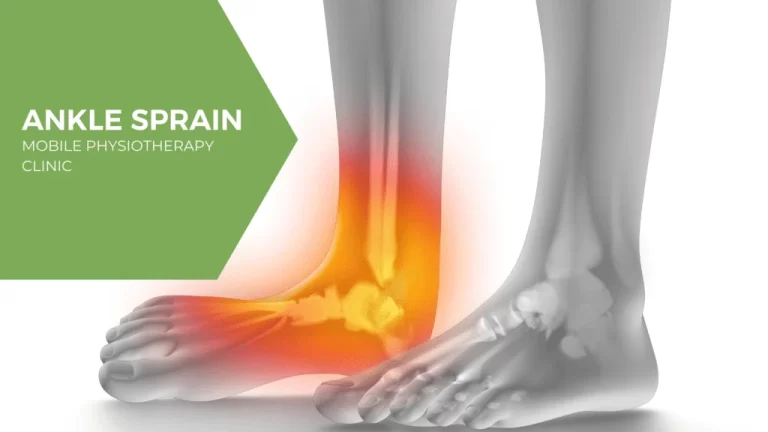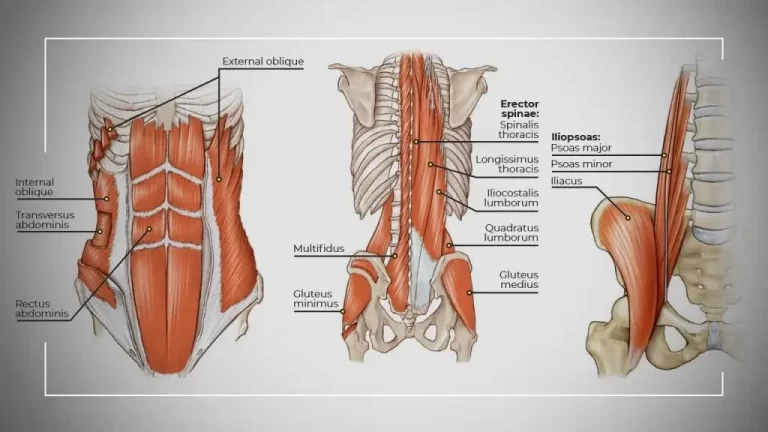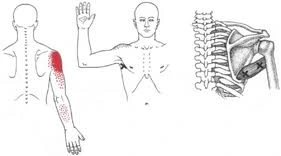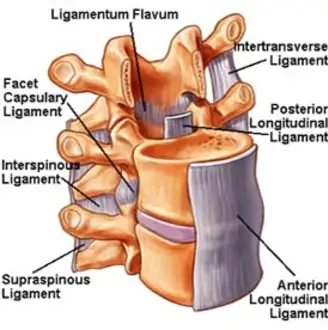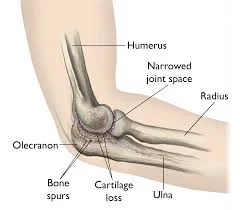Trigger Points in Hamstrings Muscle
Trigger points in the hamstring muscle are small, sensitive areas of tight muscle fibers that can cause significant pain and discomfort. Located in the back of the thigh, these trigger points often develop due to overuse, muscle imbalances, or prolonged periods of sitting.
They can lead to pain that radiates down the leg or up toward the lower back, impacting daily activities and athletic performance.
The Definition of Trigger Points:
A tight band of skeletal muscle inside a muscle group is called a trigger point, and it might occasionally feel like tiny knots or marbles beneath your skin. At the site of the trigger point or in other parts of the body, they may feel sensitive and hurt. Along with causing headaches, joint discomfort, vision problems, and tinnitus, a ringing feeling in the ears, they can also restrict range of motion.
Trigger Point Types:
Trigger points are classified according to the location of their discomfort. Two varieties exist.
The precise position of passive trigger points causes pain. When someone applies pressure on a tight muscle knot in your hamstring, the pain will be felt exactly where the pressure is.
In addition to causing pain there, active trigger points can also generate discomfort elsewhere in the body. You may have shoulder discomfort in addition to symptoms in your arm or chest if someone applies pressure to an activated trigger point in your shoulder.
The Hamstring Trigger Points: What Are They?
Human walking is based on this essential muscle group. These muscles are among the most strained in the body as it takes constant effort to stand up straight.
In the hamstrings, it is common to notice both latent and active trigger points at the same time. Trigger point activation occurs anytime there is muscular overloading. In addition to causing the well-known symptoms of knee and back pain, these trigger points are also involved in several other musculoskeletal issues, some of which are less evident.
The hamstring trigger points have the potential to greatly exacerbate neck and lower back discomfort by causing postural abnormalities. The initial stage to being an exceptional trigger point therapist is to comprehend the actual clinical influence that these trigger points might have throughout the body.
The Muscle Group of the Hamstrings:

There are three muscles to make up the hamstrings.
- Semitendinosus
- Biceps femoris
- Semimembranosus
The hamstrings contract eccentrically throughout daily activities to counteract the bodyweight’s propensity to force the trunk to bend forward on the pelvis. They also serve to regulate the leg’s forward motion during walking.
Structure and Attachments of Muscles: The following describes the four parts of the hamstring muscle group:
The middle part of the thighs, which faces the rear of the body, is home to the semitendinosus muscle. This muscle attaches to the tibia below the medial condyle after starting on the pelvic ischial tuberosity and traveling down the leg. The upper part of the posterior thigh contains this muscle’s belly.
With its wide muscular belly in the lower half of this area (nearer the knee), the semimembranosus muscle is also located on the medial portion of the posterior thigh. To connect to the medial condyle of the tibia, which is located immediately below the knee joint capsule, it first joins to the ischial tuberosity of the pelvis and then proceeds to each of the hamstring muscles in depth.
The lateral portion of the posterior thigh contains the bicep femoris skeletal muscle, which is divided into two heads, or departments: the long head as well as the short head. Following its attachment to the ischial tuberosity, the long head of the biceps femoris falls laterally and diagonally to connect the fibula bone’s head.
The shortened head of the biceps femoris connects across a line called the Aspera on the shaft of the femur bone, continuing horizontally outwardly to join the tendon of the lengthy head because it sticks to the fibula’s head.
Muscle Actions: The hamstring group’s four parts work together to flex the leg at the knee.
- Although these three “truly hamstrings” agree the thigh extends near the hip.
- When the hip is stretched, the long head of the biceps femoris laterally rotates the thigh at the hip, while the semitendinosus and semimembranosus muscles help with medial rotation.
- While the semitendinosus and semimembranosus muscles may rotate the lower leg medially at the knee, both heads of the biceps femoris can rotate the lower leg laterally when the knee is flexed.
Why Do Hamstring Trigger Points Occur?
The hamstring trigger points may be triggered or reactivated by the following situations or activities:
- Physically squeezing trigger points might occur when a person sits in a chair that is too big for them and their feet are off the ground.
- seated on inexpensive patio furniture with a canvas seat canvas hanging from a bar that surrounds the front of the seat.
- extended forward leaning in a chair that shifts the weight from the buttocks to the thighs.
- bending for extended periods at the waist
- Spending a lot of time sitting cross-legged
Symptoms and Conditions of the Hamstrings Trigger Points:
The following symptoms or clinical findings may be observed in clients with activated hamstring trigger points:
- A limp is frequently caused by posterior knee or posterior thigh discomfort that gets worse when walking.
- discomfort from sitting that affects the knee, back of the leg, or buttocks
- Leg ache that keeps you from falling asleep
Clients may also complain of trigger point feelings due to the quadriceps femoris’s strong antagonistic connection with other muscle groups.
Pain patterns and trigger locations for the semitendinosus and semimembranosus:
- Additional discomfort in the buttocks, the knee hollow, the posterior part of the thigh, and the medial side of the calf can be brought on by trigger points in these muscles.
- Many people describe the discomfort in the knee hollow as “sharp.”
Biceps femoris pain patterns and trigger points:
- If the biceps femoris is shortened and/or stiff, it can also cause pain at the back of the thigh.
- The knee hollow, sometimes called “deep-seated” or “deep pain,” is the primary site of biceps femoris trigger points.
- If the trigger points are “very strong,” the pain may spread from the knee hollow to the outer or lateral side of the leg.
Why do these muscles have trigger points, are shortened, or are tense?
Generally speaking, hamstring trigger points are triggered when you intentionally overload, shorten, or damage them.
The following are a few instances:
Overload in action
Sports are the primary setting for active overloads, when,
- The muscles are overstressed beyond their present capacity.
- The muscles are under too much stress.
- The intervals between tasks are too brief.
- Stretching and massages are not included as compensatory activities.
A few examples
Ball sports: Running and rapid direction changes are features of nearly all ball sports. Tilting the upper body forward is a typical practice. Your hamstrings are at their strongest at this time.
Cycling: During the phase where hip extension occurs, your hamstrings are highly active and provide around 30% of the force while pedaling down.
Pulling the pedals when riding with click pedals also works your hamstrings. For this reason, they are employed in this situation forever. As long as you provide them adequate time to adapt, this won’t be an issue.
Martial arts: Leg kicks, frequently quite high, are used in martial arts. With nearly every kick, the hip is either flexed or extended, and the knee is stretched.
This necessitates the rapid lengthening of the thigh’s back muscles. Your nervous system may not always be able to regulate these extremely intricate motions, particularly when you’re cold or exhausted. Because of this, the nervous system may perceive these rapid movements as dangerous and cause the hamstrings to constrict instinctively.
Trigger points may be triggered as a result.
Here are some more instances of ways to overwork your hamstrings:
- Exercises using weights, such as deadlifts
- Leg Curls and Leg Press
- Using skateboards
Permanent reduction in length
- Every sitting posture causes the knees to flex. This indicates that your hamstring muscle fibers are getting close. Furthermore, the muscles are further strained by your body weight.
- This may eventually result in disagreements and trigger points.
Trigger Point-Related Conditions:
You can be given a diagnosis of myofascial pain syndrome if your trigger point pain becomes persistent. That is, a trigger point in that place or another portion of the body is causing persistent, excruciating pain. Myofascial pain syndrome symptoms include, in addition to discomfort:
- restricted range of motion
- A headache
- Bad posture
- Poor sleep quality
- Lightheadedness
- Depression
Management Hamstrings Trigger Points:
minimizing triggering point injury is the main objective of treatment. This might be difficult due to the complexity of musculoskeletal discomfort. There is little scientific proof that additional therapies are helpful, even if some have been proven to be successful.
Drugs
To relieve discomfort, a medical professional could suggest taking medicine. The majority of the time, they will recommend medicines like nonsteroidal anti-inflammatory drugs, which include over-the-counter medications like aspirin or ibuprofen.
Additional drugs used to alleviate muscular soreness include:
- Relaxants for muscles
- Anticonvulsants
- Antidepressants
- Botox
Physical Therapy of Hamstrings Trigger Points:
Numerous non-pharmacological therapeutic alternatives are available to lessen muscle knot discomfort. Among the most prevalent are:
- putting pressure on it manually.
- Deep tissue massages and myofascial releases, which are massages intended to assist adjust the fascia around your muscles, are examples of this. Your muscles’ natural mobility and circulation may both benefit from this. You may also use a back-rubber, foam roll, or tennis ball to put pressure on your knots manually.
Self-massage with a roll of fascia
A quick and easy way to massage your hamstrings is using a foam roller.
It works especially well for relaxing your muscles generally or when your tension is so high that a precision massage would be too painful.
- Lay an inflatable roller upon the flooring beneath the area of your thigh.
- Roll carefully back and forth after using your hands to support yourself off the ground.
- In this manner, look for hamstring strains.
- When you locate one, roll over it carefully a few times.
Using a ball to self-massage the ischium
The region where the muscle tendons link to the bone will be treated here. This region’s trigger points frequently cause sacroiliac joint pain as well as discomfort while bending over with the knees extended.
- Place a massage ball beneath your thighs, just before your ischium, while seated on a chair.
- Roll your thigh across the ball after shifting weight onto it.
- Look for stress areas and use some of these techniques to relieve them.
Stretching the hamstrings:
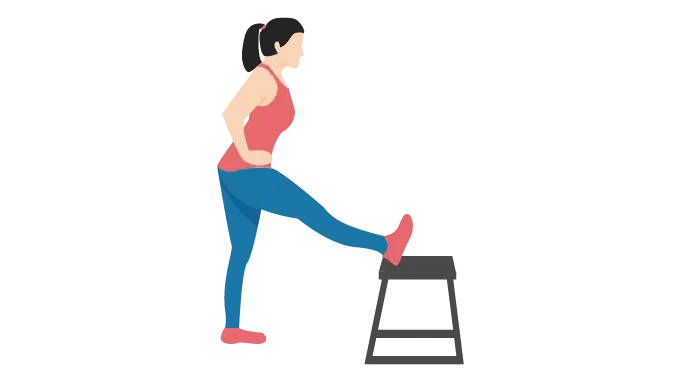
- Step 1: Position yourself close to a workout bench. Put one leg on the bench. Take a proud posture and lower your shoulders.
- Step 2: Position yourself at your waistline and gently bend your straight leg. As soon as you experience a stretch behind your elevated thigh, stop and hold this position for the recommended duration.
Chair lift:
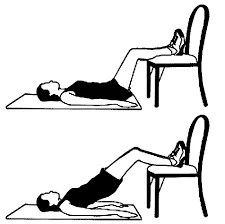
Slowly raise both hips off the floor. Immediately following two seconds of holding, gradually lower yourself. Do three sets of fifteen. Once your hamstrings are stronger and you feel your leg is steady, you may begin strengthening the quadriceps, or the muscles at the front of the thigh, by doing lunges.
Hamstring curl:
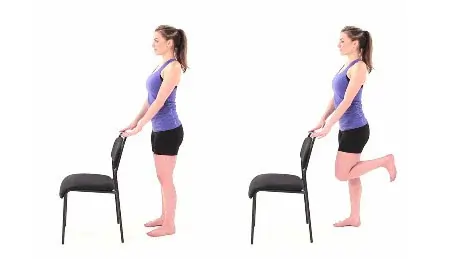
- Stand with your feet hip-width apart. Put your hands on your waist or a chair to maintain your equilibrium. You should utilize your left leg to assist with your weight.
- To get your heel close to your butt, slowly bend your right knee. Maintaining your thighs horizontally is what you want.
- Slowly lower your foot.
- Do twelve to fifteen repetitions.
- On the opposite leg, use the same method.
When you apply pressure to your trigger points, the tissue’s circulation is momentarily stopped, which causes the tissues’ nitric oxide levels to rise. Nitric Oxide instructs your body to open microcapillaries, which are little blood vessels, to help break up the trigger point and end the pain cycle.
Dry needling. A needle is inserted into the trigger point and moved in and out by a medical professional. Although the region may feel unpleasant following the operation, this is thought to be one of the best methods for reducing trigger point discomfort.
injections at trigger points. Although the needle used in this treatment contains a fluid, usually a local anesthetic, it is comparable to dry needling. Although there is no scientific proof that steroids are beneficial, they are nevertheless an option.
Stretch and spray. At this moment, a physical therapist stretches out the trigger point region after applying a cold spray.
ultrasound. The goal is to warm up the muscles to lessen discomfort. The effectiveness of ultrasounds in reducing pain has been the subject of conflicting research.
Summary
When tissue continues to spasm, tight bands of muscle called trigger points develop inside the muscle. They are frequently called knots. The tiny nodules are brought on by stress or damage to the muscle, such as persistently bad posture or sleeping in an uncomfortable position.
There are several therapy methods accessible, even though reducing trigger point pain might be challenging. Your doctor may suggest physical therapy, massage therapy, medicine, or needling as a type of treatment.
FAQs
How can hamstring trigger points be released?
Techniques for treating trigger points
Stretch and spray.
massage with deep strokes.
compression.
methods for muscle energy.
release of position.
Dry needling.
wet needling.
What signs and symptoms indicate a trigger point in the hamstrings?
There will be a firm lump or knot where you are.
What is the hamstring trigger point referral pattern?
“High hamstring pain,” which refers to pain that travels upward to the sit bone or buttock crease, is mostly caused by trigger points in the semitendinosus muscle. Additionally, pain may travel down to the medial calf and posterior thigh.
How quickly can a hamstring be healed?
Get some rest. Take a vacation from using your hamstring muscles so that the injured tissues may heal.
Ice. As soon as possible after the injury, apply ice to the affected region.
compression. Apply an elastic bandage on your leg until the swelling subsides.
elevation. Rest by sitting or lying back with your leg up.
References
- Perry, L. (2013, January 14). The Hamstring Trigger Points: Hiding in Plain Sight. TriggerPointTherapist.com. https://www.triggerpointtherapist.com/blog/hamstring-pain/the-hamstring-trigger-points-hiding-plain-sight/
- Hamstrings – Pain & Trigger Points. (2020, May 15). Muskel Und Gelenkschmerzen. https://www.muscle-joint-pain.com/trigger-points/trigger-point-self-treatment/hamstrings/
- Professional, C. C. M. (2024, May 1). Hamstring Muscles. Cleveland Clinic. https://my.clevelandclinic.org/health/body/21904-hamstring-muscles
- Inverarity, L., DO. (2022, October 24). What Are Trigger Points—and How Can Therapy Help? Verywell Health. https://www.verywellhealth.com/trigger-point-2696165
- Physiotherapist, N. P.-. (2022, May 3). Hamstring Muscle Injury?: Cause, Symptoms, Diagnosis, Exercise. Mobile Physiotherapy Clinic. https://mobilephysiotherapyclinic.in/hamstring-muscle-injury-physiotherapy-exercise/#Physiotherapy_in_Hamstring_Muscle_Injury


